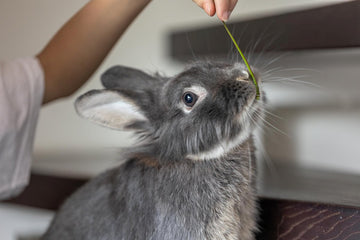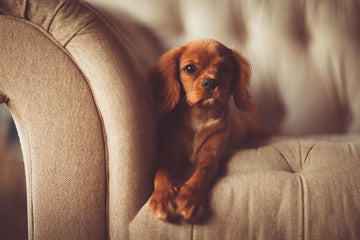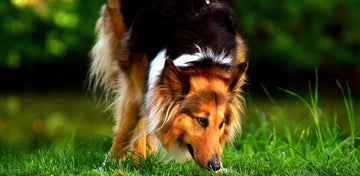Shedding Season: How to Manage Rabbit’s Fur and Keep Your Home Clean
by Jamie Tedder on Oct 28, 2024

Owning a rabbit brings so much joy, but it also comes with specific challenges—one being managing all that fur. Shedding is normal in rabbits, but you may sometimes see your pet losing more fur than usual, leaving tufts of fur on furniture, floors, and even your clothes. This can make you wonder whether it's normal or something else is happening.
Why Bunnies Shed
Rabbits naturally molt in response to changing seasons, adjusting their coats to regulate body temperature. Unlike other animals, rabbits don't pant to cool down, so shedding excess fur is essential. They usually go through two significant shedding seasons, also called molting, each year—once to shed their summer coat and once to shed their winter coat. In the winter, they grow a thick winter coat to keep warm, and as the weather warms up, they shed that coat to make way for a lighter one.
Even in temperate climates like Florida, rabbits still molt, though their fur changes may be less dramatic than in colder regions. Indoor grass pads provide a convenient bathroom solution, giving you one less mess to worry about—especially during shedding season.
Signs of Molting in Rabbits
When a rabbit goes through the natural process of molting, you may see tufts of fur everywhere—on their bedding, on your furniture, and around their living area. When shedding, your rabbit's coat may appear thin or patchy as they lose fur, but this is completely normal.
Shedding Patterns
Rabbits often start shedding from their head, moving down their neck, back, and stomach. Some rabbits shed evenly, while others may shed in patches—often around their flanks, tail, or belly. Adding extra protein to your rabbit's diet can help them shed their coat faster, reducing the risk of fur getting stuck in certain areas.
How Much Shedding is Normal?
Each rabbit is different, but most shed heavily twice a year, particularly when transitioning to summer when they lose their thick coats. Some rabbits may shed lightly throughout the year—indoor rabbits that don't get as much sunlight exposure may appear to shed more frequently.
As long as your rabbit is healthy, their shedding should follow a relatively consistent pattern. However, if you observe excessive shedding, it could signal stress, a poor diet, or even fur mites. Look for bald patches or uneven molting patterns, which can be signs of other health problems. It's worth consulting a vet to determine the issue.
The Natural Shedding Process
In addition to seasonal shedding, rabbits undergo a few key shedding stages. Baby rabbits shed their first coat, or the baby coat, at around five months old. This is replaced by a transitional coat, which is then followed by their adult coat. Once the adult coat comes in, rabbits begin the regular seasonal shedding cycle.
As your rabbit gets older, the shedding process becomes more visible. Some rabbits may even develop small bald patches as their fur sheds, but don't worry—these areas usually regrow new fur within a few days.

Helping Your Rabbit Through Shedding Season
While excessive shedding can make house cleaning difficult, it is manageable with the proper approach. That starts with taking better care of your rabbit during the shedding season. Managing their shed fur properly helps prevent fur ingestion, which can lead to serious blockages in their stomachs.
Regular Grooming
Grooming helps manage a shedding rabbit, preventing excess fur from getting stuck in their coat. Use a brush designed for rabbits to remove loose fur. Groom your rabbit daily during heavy shedding periods to keep their coat in good condition.
Maintaining a Clean Home
Regular vacuuming is essential, especially in areas where fur builds up. Use a vacuum with strong suction to pick up even the bits of loose hair. Additionally, consider confining your rabbit to one area or designating a room to contain the mess. Grooming your rabbit on a towel or mat in a set spot can also help contain fur.
Use Furniture Covers
Use covers to protect your furniture, making washing off fur easier, especially during heavy shedding seasons. You can also use lint rollers on your upholstery and clothes to quickly remove loose fur. Keep them handy for quick cleanups throughout the day.
Hydration and Diet
A healthy, balanced diet is also crucial in reducing excessive shedding. Fresh hay and plenty of fresh water should be a staple in your rabbit's diet. Hay provides the necessary fiber to support healthy digestion and fur quality in rabbits. If your rabbit is shedding heavily, increase their protein intake to help them shed their old coat faster.
Air Purifiers
Air purifiers help reduce airborne fur and allergens. Using one in the room where your rabbit spends the most time can help keep the air cleaner and fur-free.
Grass Pads for Natural Bathroom Solutions
Grass pads like Gotta Go Grass are a great addition to your rabbit's habitat, especially during shedding season. These natural pads help absorb moisture and odors, providing a sanitary and convenient bathroom space for your rabbit while keeping your home cleaner. They're also long-lasting and can be easily replaced as necessary.

Final Thoughts
With the right strategies, managing a shedding rabbit is completely manageable. Regular grooming, a balanced diet with fresh hay, and proper hydration will help keep your rabbit's coat healthy and shedding under control. Using tools like vacuum cleaners, lint rollers, air purifiers, and grass pads for small animals, you can keep your home clean and comfortable for you and your pet. With consistent care, you'll find that the molting season doesn't have to be overwhelming—it's simply a part of your rabbit’s life that you’re well-equipped to handle. For more tips, check out our article on How to Keep a Clean Home with Free-Roam Rabbits.




